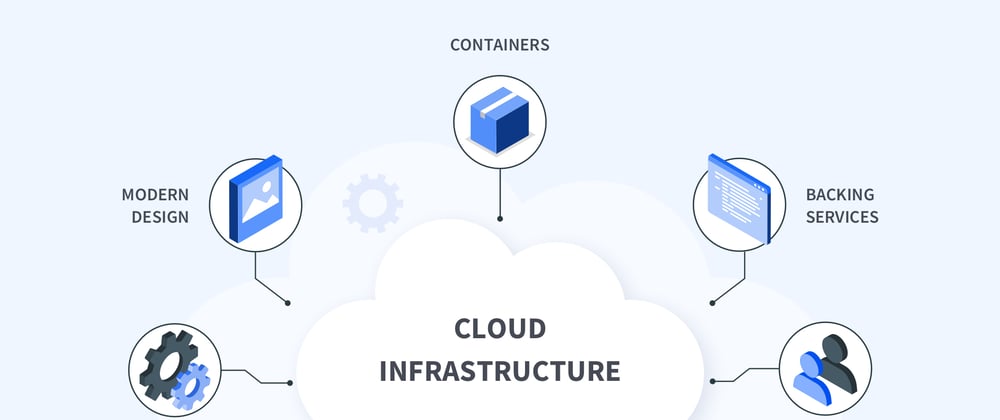Cloud-native technology is an essential element of today's software engineering. It enables us to handle sudden increases in demand in a structured and effective way, with the aid of containers, microservices, DevOps, and APIs. The demand for cloud jobs is high, so developing good cloud proficiency could set you apart from the competition.This article will cover cloud-native terminology, the advantages of cloud-native architecture, how to build a cloud-native app, and what you should know for job interviews.
What is cloud-native?
Cloud-native is a strategy for application development that applies the cloud computing delivery model. This approach was developed to optimize the development of applications by making use of the scalability, resilience, and adaptability that cloud hosting gives.
The Cloud Native Computing Foundation (CNCF) states that “cloud-native technologies empower companies to develop and operate scalable applications."
Cloud-native architecture
Cloud-native architecture is a method of designing applications or services for the cloud rather than traditional on-premises infrastructure. Microservices and serverless functions are integral to this type of architecture, allowing for flexibility, scalability, and cost savings. Containerization and cloud-switching help make cloud-native apps more robust and resilient.
Benefits of cloud-native architecture include improved DevOps, scalability, and cost efficiency, as well as the ability to deploy services independently and in multiple languages or frameworks. Challenges include learning curves and the need to stay up to date with cloud-native technology.
Overall, cloud-native architecture has the potential to greatly improve application development and deployment. By leveraging the scalability, flexibility, and cost savings of the cloud, organizations can optimize their applications and services for the digital age.
Benefits
The benefits of using microservices for continuous integration and container orchestration are numerous.
We can enjoy faster development time and reduced downtime as well as portability across cloud providers.
Continuous integration and delivery efforts are streamlined since the development lifecycle is shortened and more processes are automated.
Container orchestrators enable us to allocate resources more effectively and identify bugs in specific containers more easily.
This helps us detect the root of the problem and prevent it from affecting the entire application.
Cloud native architecture further accelerates the app development process by leveraging compute resources across different environments and getting more value from the hybrid cloud.
Challanges
The implementation of DevOps can be a challenge; if not established properly, managing distributed workflows and microservices may be difficult.
It is important to consider the operating system requirements for particular microservices before proceeding.
Additionally, when moving from a traditional application to a cloud-native one, dependencies and interdependencies should be factored in.
Constructing a Cloud-Native AppCreating a cloud-native application requires using a variety of tools and techniques. Here are some of the basics:
Utilizing cloud-based tools and frameworks: To build a cloud-native application, you'll need to use cloud-based tools and frameworks such as containers, serverless computing, and microservices.
Designing for scalability: Cloud-native applications are typically designed to be highly scalable, meaning they can easily increase or decrease their capacity to meet the demands of the workload.
Automation: Automation is key to ensure your cloud-native application runs efficiently and securely. Automation can be used to manage workloads, deploy new versions of applications, and monitor usage.
Security: Security is critical when deploying cloud-native applications, as they are often exposed to the public internet. You'll need to ensure your system is secure, with authentication and authorization measures in place.
Monitoring: Monitoring is essential for cloud-native applications to detect and respond to potential problems. You'll need to monitor the performance and usage of your application to ensure it's running smoothly.
Preparing for a Cloud-Native Interview: What to Know?
If you're looking to land a job in a cloud-native environment, it is important to be prepared for the interview. Having a good understanding of the cloud-native landscape and the various technologies involved will help you stand out from the competition. Here's what to know before heading into a cloud-native interview:
Understand the cloud-native landscape: Be familiar with cloud-native concepts and the various technologies associated with it, such as containers, Kubernetes, serverless computing, microservices, and cloud-native infrastructure.
Understand the benefits of cloud-native: Be able to explain the advantages of cloud-native architectures and why organizations are embracing the technology.
Have experience with cloud-native technologies: Showcase your experience with cloud-native technologies by discussing the projects you have worked on and the challenges you have faced.
Showcase your skills: Demonstrate your skills in developing, deploying, and managing cloud-native applications.
Show your problem-solving skills: Demonstrate your ability to think critically and come up with innovative solutions to complex problems.
By preparing for your cloud-native interview, you will be well-equipped to make a lasting impression on the interviewer and land the job.
Conclusion
In conclusion, cloud native technologies provide a modern, reliable, and efficient way to build, deploy, and manage applications. This approach offers a wide range of benefits and is increasingly becoming the preferred choice for modern organizations.








Oldest comments (0)